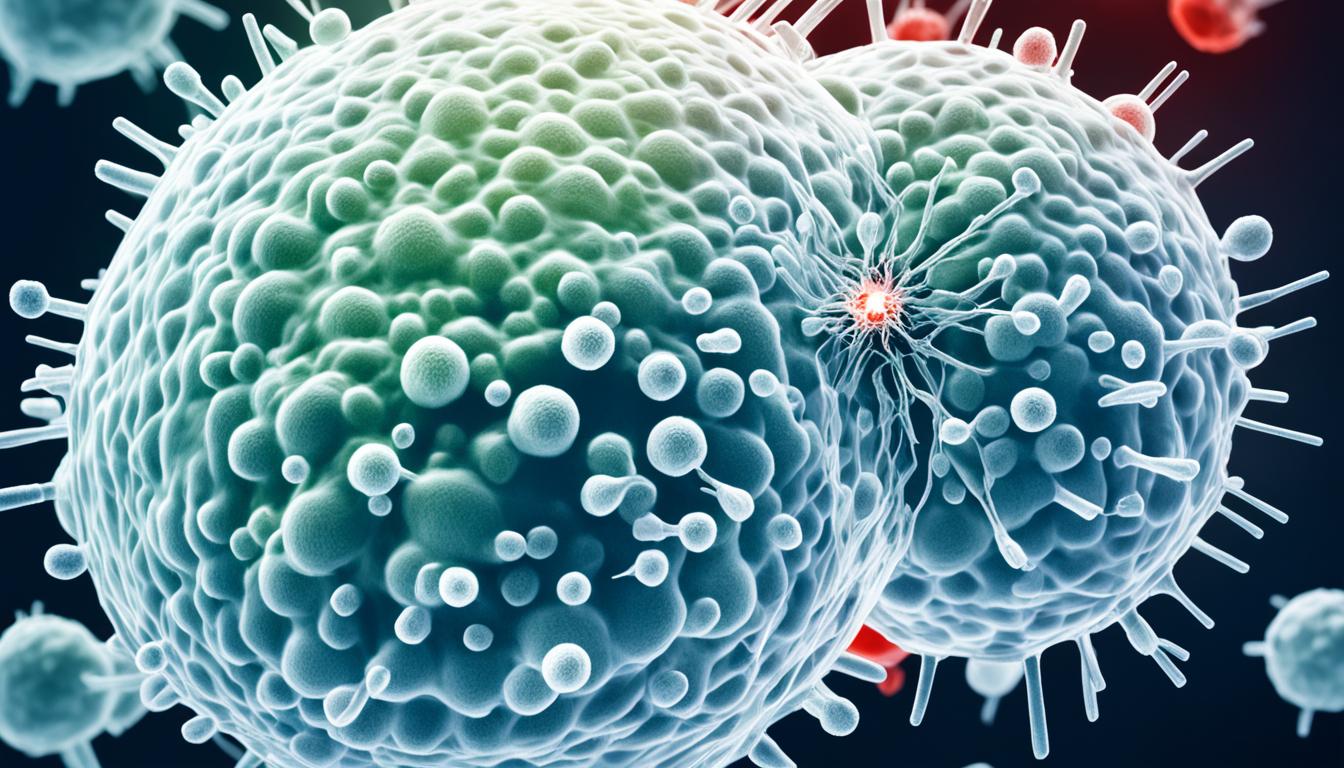Chronic myelogenous leukemia (CML), also known as chronic myeloid leukemia, is a cancer type. It affects the bone marrow, where white blood cells increase. This type often appears in older adults. People with CML may feel bone pain, bleed easily, be tired, lose weight, have a fever, or not want to eat.
The main cause is a genetic change called the Philadelphia chromosome. This change makes white blood cells grow abnormally. Finding CML early through tests and checking bone marrow is very important. It helps in treating and living with the disease.
Key Takeaways:
- Chronic myelogenous leukemia (CML) is a type of cancer that affects the bone marrow.
- CML is characterized by an increased number of white blood cells in the blood.
- Common symptoms of CML include bone pain, easy bleeding, fatigue, weight loss, fever, and loss of appetite.
- The underlying cause of CML is a genetic mutation called the Philadelphia chromosome.
- Early detection and diagnosis of CML are crucial for successful treatment and management.
Causes and Risk Factors of Chronic Myelogenous Leukemia
Chronic Myelogenous Leukemia (CML) starts when the Philadelphia chromosome appears. This change is because chromosomes 9 and 22 swap genetic material. The result is an abnormal gene, BCR-ABL, that makes too much tyrosine kinase. This process causes extra white blood cells to form, which causes CML (Causes of CML).
We don’t know exactly why the Philadelphia chromosome forms. But, some things make you more likely to get CML. Getting older is a big reason, especially for older folks. Men are at higher risk, too. If you’ve had radiation for cancer before or were in contact with it on a job, your risk goes up (Risk factors of CML).
Risk Factors for Chronic Myelogenous Leukemia
| Risk Factors | Description |
|---|---|
| Age | Older age is a significant risk factor for CML. |
| Gender | Males have a higher likelihood of developing CML. |
| Radiation Exposure | Individuals exposed to radiation therapy are at an increased risk of developing CML. |
If someone in your family has CML, it doesn’t mean you’ll get it too. It’s not usually passed from parents to kids. But, seeing a genetics expert and getting tested can help. They can check your risk and suggest ways to prevent or find cancer early (Risk factors of CML).
Stem Cell Therapy as a Treatment Option for Chronic Myelogenous Leukemia
Stem cell therapy is a new way to treat chronic myelogenous leukemia (CML). It uses the amazing power of stem cells. These cells can turn into different types of blood cells. The goal in CML is to swap out sick bone marrow cells with healthy ones. This helps in making normal blood cells again.
For CML, using stem cells is a chance to remove the bad white blood cells. These cells come from places like bone marrow, blood, or umbilical cords. Having lots of sources makes stem cell therapy easier to get to and more effective for CML.
Thailand is leading in using stem cell therapy for CML. This way of treating the disease shows a lot of hope. It gives CML patients better chances and a higher quality of life using the power of stem cells.
Considering stem cell therapy is important for those with CML. It can help by making normal blood cells and fighting the disease. This kind of therapy brings hope, showing how cancer care keeps improving.

